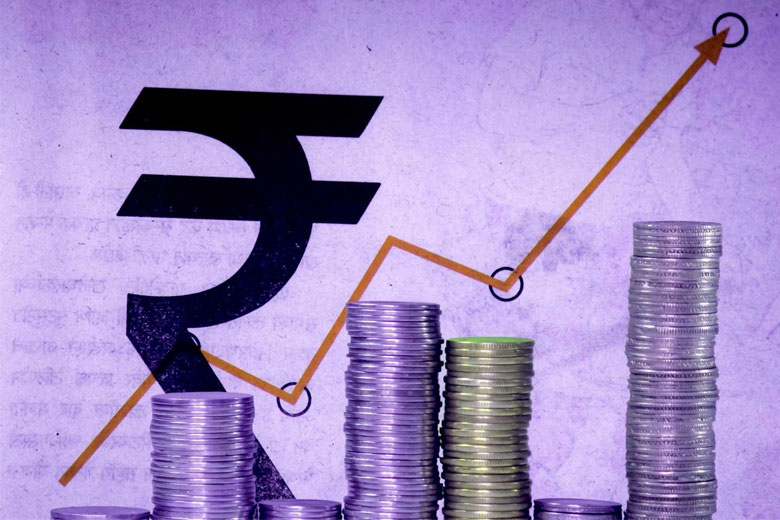India’s economic growth accelerated to more than 8% in the April-June quarter, a better-than-expected result that is underpinned by robust manufacturing and expansion in the construction sector.
The data released on Friday comes as a relief to the government of Prime Minister Narendra Modi, which has taken flak for two ambitious but disruptive policies — taking high-value banknotes out of circulation in November 2016 and implementing a new goods and services tax in July 2017. The moves temporarily slowed the growth of Asia’s third-largest economy.
Gross domestic product for the three months ended in June, the first quarter of the Indian financial year, expanded at an 8.2% annualized rate, significantly higher than the 7.7% registered in the previous quarter, official data showed.
The improvement comes despite the fact that the rupee has fallen 10% this year, causing the inflation rate to rise. The currency touched a record low on Friday.
Economists polled by Thomson Reuters forecast 7.6% growth in the April- June quarter, while State Bank of India, the country’s largest public-sector lender, expected an expansion of 7.7%.
With a general election due by May, accelerating growth could work in favor of Modi, who will seek a second five-year term.
The latest data also provides some good news on job creation, a key issue for Modi. The prime minister’s opponents have been attacking his government for not doing enough to address unemployment. An absence of reliable job data in the country, where around 90% of people are employed in the informal economy, has added to the difficulty of policymaking.
In April-June, manufacturing grew 13.5%, compared with a 1.8% contraction in the same quarter last year, while construction expanded 8.7%, up from 1.8% in the year-earlier period. Economists say these two sectors have experienced the healthy growth that is crucial for generating jobs.
India, a country of over 1.25 billion, sees over 12 million people entering the job market every year. According to the World Bank, it needs to create 8 million jobs annually just to keep the employment rate constant.
Economic growth slipped to 5.6% in the April-June quarter last year, the lowest since Modi’s government came to power in May 2014. Business activity was hit after demonetization sucked 15.4 trillion rupees ($217 billion), or 86% of currency in circulation, from the cash-dependent economy. The chaotic introduction of the goods and services tax followed months later.
The latest GDP figures indicate that Asia’s third-largest economy has overcome the hiccups caused by the two drastic policy measures. They also show that India remained the fastest-growing major economy, outpacing neighboring China, which grew 6.7% in the same quarter.
Moody’s Investors Service said earlier in August that it expected the Indian economy to grow around 7.5% in 2018 and 2019, citing strong local demand, an improvement in industrial activity and resilience to external shocks.
“A normal monsoon together with the increase in the minimum support prices for [summer-sown] crops, should support rural demand,” it said in a report. “Despite external headwinds from higher oil prices and tightening financing conditions, growth prospects for the remainder of the year remain in line with the economy’s potential.”
The Reserve Bank of India, the country’s central bank, projected 7.4% growth for the current fiscal year. In July, it raised the benchmark repo rate by 25 basis points for the second time in two months to 6.5% in a bid to curb inflation ahead of elections.
Modi, meanwhile, appears confident of the country’s growth prospects. “The economy is growing at a robust 7.5% plus, all macro indicators are positive, the foreign reserves are well over $400 billion,” the prime minister said in an interview with the Hindustan Times newspaper earlier in August.
“Our economy is being termed as an elephant that’s starting to run. I believe that we are running on the right path,” he said referring to a recent International Monetary Fund report that said India’s economy is gaining momentum owing to several policy measures such as the implementation of the long-awaited GST, and the country opening up more to foreign investors.
The IMF has estimated 7.3% growth for India in the current fiscal year as compared to 6.7% in the year prior.






